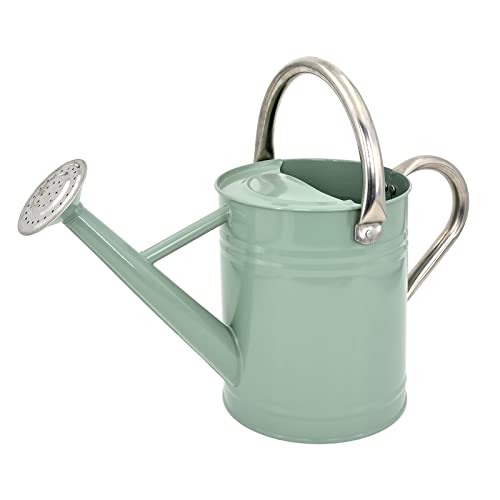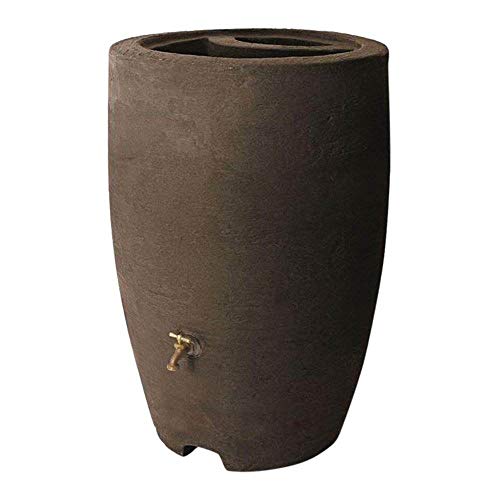What is a rain pot? And why they make stylish alternatives to water butts
You may not know what a rain pot is, but they can be an invaluable addition to your yard
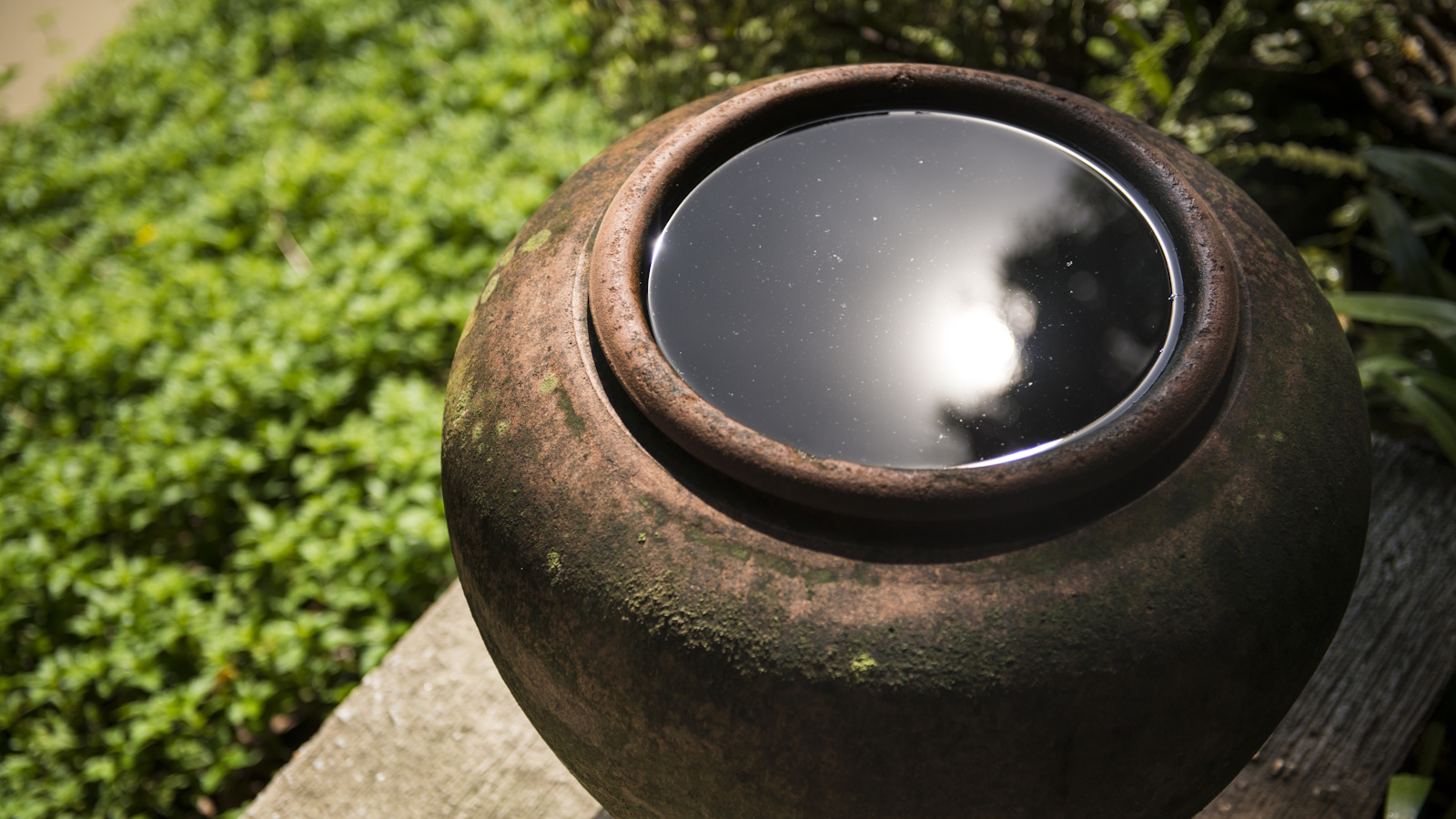

If you're seeking to find more sustainable ways of gardening, especially when it comes to watering, investing in a reliable vessel to collect rainwater in your yard is a must.
There are many different ways to do this, but the most common way people choose to harvest rainwater is to install a water butt. This is a tank or barrel, often cylindrical in shape, that collects water via a downpipe that would otherwise overflow from gutters or run into a drain.
However, water butts are not always the most aesthetically pleasing yard accessory. We spoke to experts to learn about a stylish alternative - a rain pot - looking into how they work and what commonalities they share with the trusty (yet often clumsy-looking) water butt.
What is a rain pot?
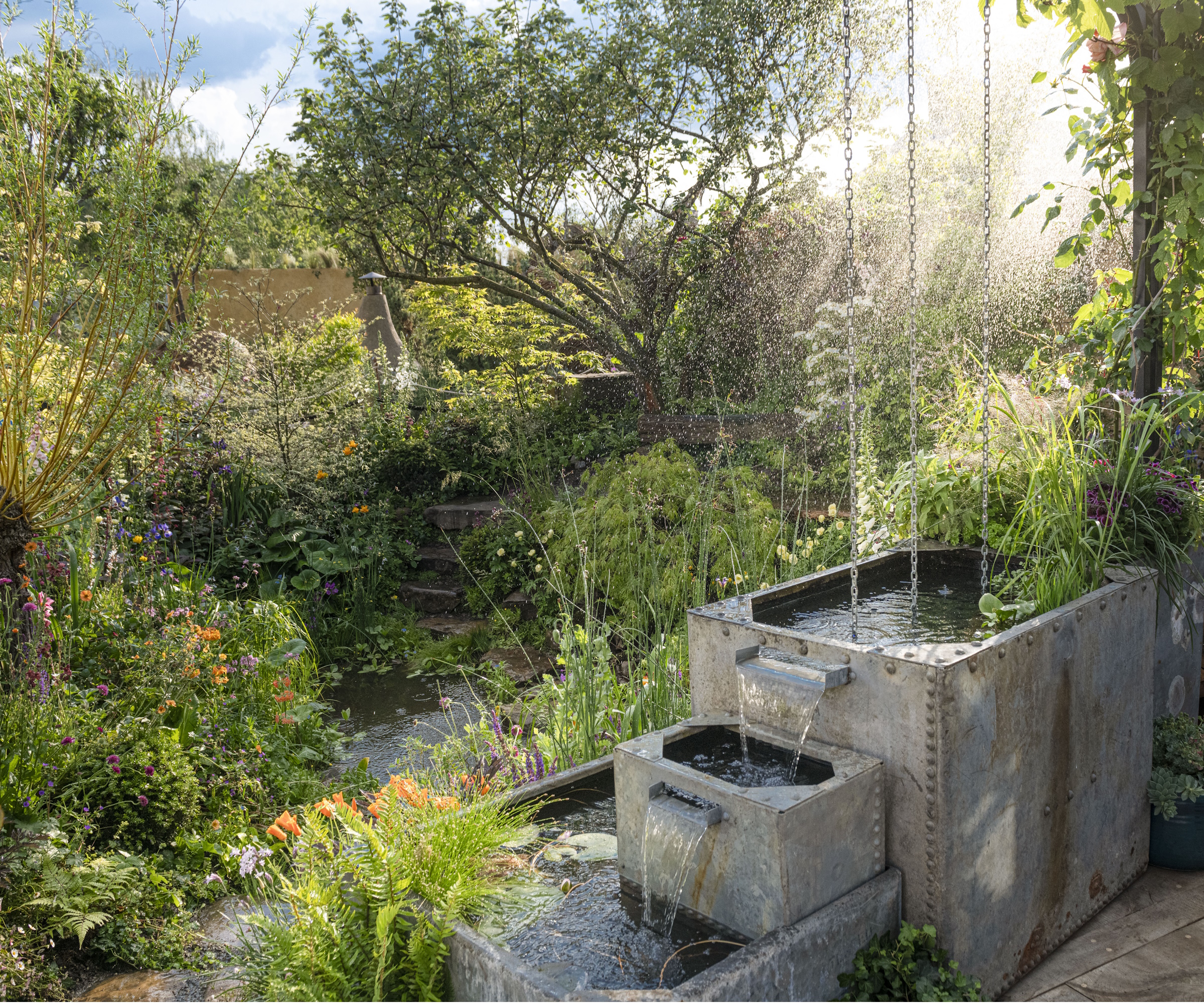
When it comes to harvesting rainwater and reducing water waste in your yard, a rain pot is not too dissimilar from a water butt, but there are some notable differences.
A rain pot typically features an open top to catch rain and a faucet on the side to dispense the water as needed, like this Amphora terracotta water harvesting pot from Home Depot. They are more decorative than rain barrels and water butts, often made from ceramic pot, terracotta, stone, zinc or hammered copper.
The material and shape of these pots will vary to meet your desired aesthetic. But generally speaking, a rain pot will be smaller in size and more decorative than a large water butt. They can also double as a planter, and be filled with flowers and shrubs that thrive in water-logged soil.
Sally McCabe, Associate Director of Community Education at the Pennsylvania Horticultural Society (PHS), explains: 'Because gardeners in different regions use different terms for many of the same things, let's clarify what we're calling a water butt, what makes something a rain pot, and what rain barrels, water tanks, and self-watering pots are,' says Sally.
'All are ways to store water; what varies is size, purpose, how the water gets in, how long the water stays in, and how the water gets out.'

Sally McCabe is the Associate Director of Community Education at the Pennsylvania Horticultural Society (PHS). In this role, she is instrumental in leading PHS’s Garden Tenders and Green City Teachers programs and instructs gardeners and educators through workshops that service hundreds of people annually. Sally prompts change at the neighborhood level by working directly with community members, and has been involved with gardening and horticulture for almost 50 years because she passionately believes that it can change the world, one community garden at a time. For 40 of these years, Sally has been at the forefront of PHS Garden Tenders and Green City Teachers.
What are the pros of using a rain pot?
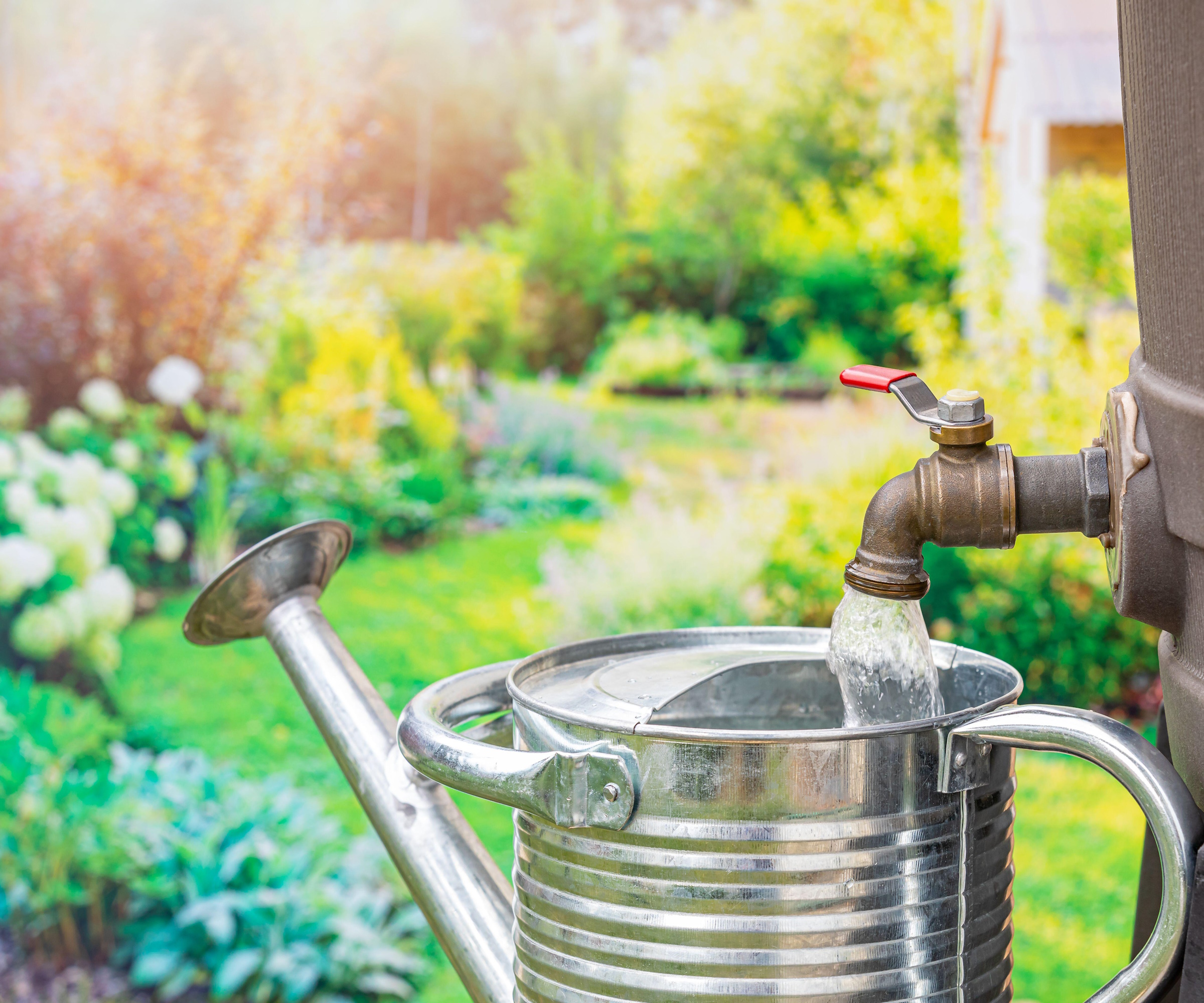
There are several pros to using a rain pot. Firstly, when your rain pot is getting too full, you can easily prevent it from overflowing by letting some water out of the faucet to use elsewhere in your garden, whether that is directly onto a flower bed, or into a watering can.
They are also much easier and less messy to extract water from when filling up watering cans, meaning less spillage and wastage of your harvested rainwater.
Rain pots also tend to look better in your garden. The Impressions Corsican rain saver from Walmart, for instance, is very stylish without the bulkiness of a standard water barrel. Being typically smaller in size than a multi-gallon water tank, your rain pot can blend in with your planting better, and becomes a conscious part of your landscaping rather than a bit of an eyesore.
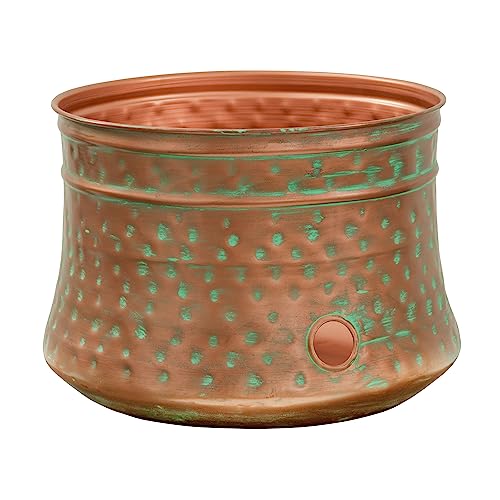
This hammered copper pot has been on my wish list for months, and now it's on sale it would be crazy to miss out on this discount. It's designed for storing a garden hose, but I'd use it as a decorative rain pot and fit a faucet into the hole where the hose would ordinarily come out.

This galvanized metal watering can could be used outdoors or in, and would make a very stylish addition to a rain garden.
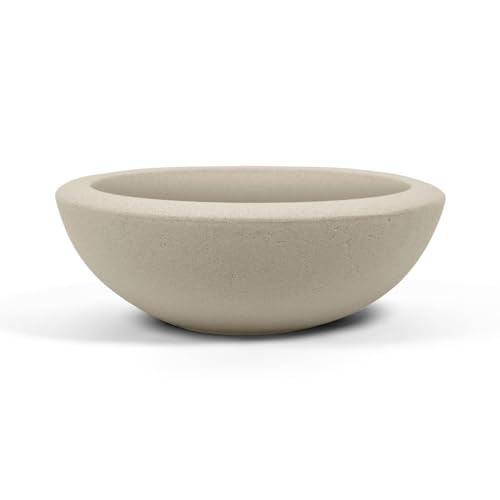
This is such a versatile vessel, which you could use as a small rain pot or to plant a rain garden in. It would also work as a decorative outdoor planter to place in the center of a dining table.
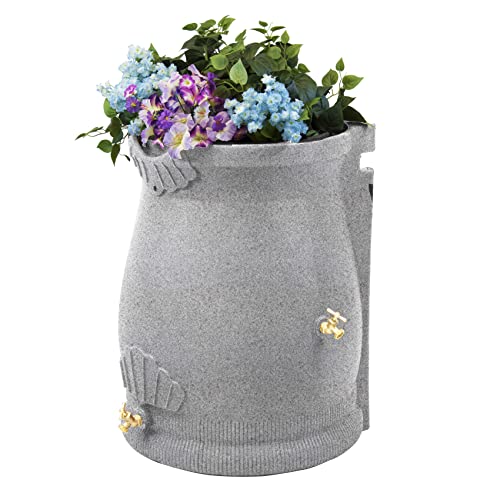
This 50 gallon granite-effect rain pot has two faucets at different heights making for easy filling of your watering can, and combines a planter section for moisture-loving plants.
Are rain pots a good alternative to traditional water butts?
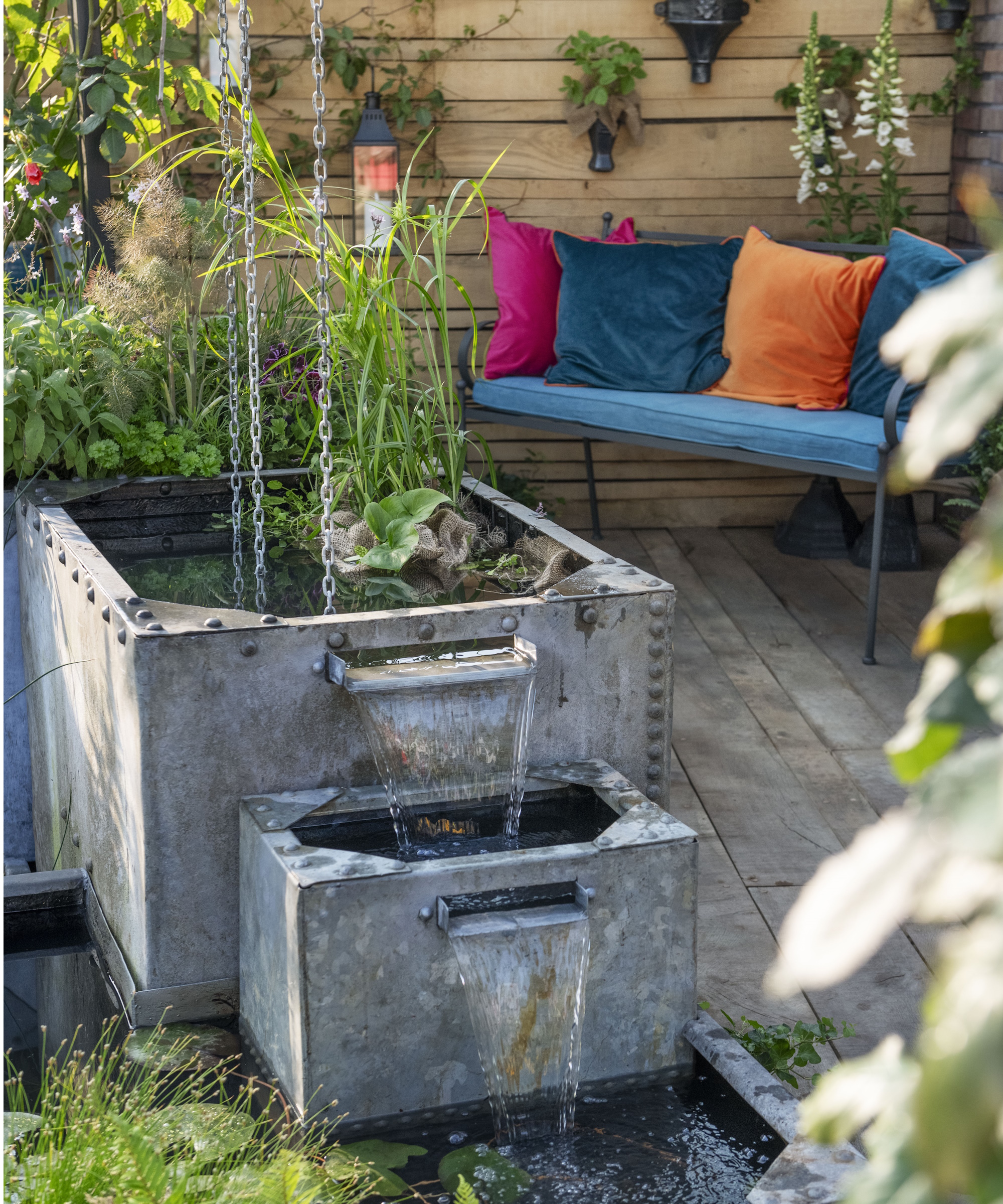
Whether a rain pot is better than a water butt or rain barrel depends on what you need for your yard. As Sally mentioned, all water harvesting solutions serve a different purpose, so if you're building an aesthetic gardenscape and would love the addition of a decorative rainwater vessel it would likely be best for you.
However, if you have small children and animals, they could be at risk if you have an open ran pot in your yard. Therefore, sticking to a traditional water butt, or making sure you choose a pot with a lid, might be best for you.
FAQs
What maintenance does a rain pot require?
Sally McCabe, Associate Director of Community Education at the Pennsylvania Horticultural Society (PHS), says: 'Rain pots need to be drained regularly, cleaned periodically, and upended at least yearly. They should also be treated with BTi (bacillus thuringiensis israelensis) to keep mosquitoes from becoming a problem. This is a naturally occurring bacteria that helps control mosquito larvae.'
How can I maintain a rain pot in winter?
Depending on the material your rain pot is made from, it could be wise to empty your rain pot and move it in the winter to protect from freezing and cracking.
Jenny Rose Carey, a professional horticulturist, author and gardener, says: 'I have old whiskey barrels that are used as water butts and rain barrels. I have had them for many years and only have them connected in the summer months when my family are watering our outdoor plants. We have very cold winters, so if we left the water in the barrel it would freeze solid and probably break and leak next year.'

Jenny Rose Carey is an avid hands-on gardener, professional horticulturist, and author. Jenny moved with her American husband to the Philadelphia, Pennsylvania and has gardened there, at her private 4.5 acre garden called Northview, ever since. Jenny has authored two books, Glorious Shade and The Ultimate Flower Gardener's Guide. Jenny's third book, concentrating on bulbs, is due to be released in the fall of 2025.
'Rain water is good for plants because it doesn't have the added chemicals that are sometimes found in tap water,' notes Jenny Rose Carey. 'Rain pots are a great way for a gardener to save use the free rain water that is coming from their roof to keep moisture-loving plants healthy.'
To add to your decorative rain pot, you could also switch a traditional downpipe for a rain chain to create a gentle, mesmerizing sound and a meditative feature.
Sign up to the Homes & Gardens newsletter
Design expertise in your inbox – from inspiring decorating ideas and beautiful celebrity homes to practical gardening advice and shopping round-ups.

Ciéra is a writer and regional laureate with particular passions for art, design, philosophy and poetry. As well as contributing to Livingetc, she's an Editorial Assistant for Design Anthology, and a contributing writer for Homes & Gardens and Apartment Therapy. Previous commendations of hers include being Highly Commended by The Royal Society of Literature and receiving a prestigious MA Magazine Journalism scholarship to City University, London.
-
 Kylie Jenner, Tommy Hilfiger, and Lenny Kravitz transform their homes with prints – the London Original Print Fair Director has a method that makes their look 'accessible and affordable' in your home
Kylie Jenner, Tommy Hilfiger, and Lenny Kravitz transform their homes with prints – the London Original Print Fair Director has a method that makes their look 'accessible and affordable' in your homeCelebrities from the Kardashians to Lenny Kravitz decorate their homes with prints by famous artists, and it's easier to recreate than you might expect
By Sophie Edwards
-
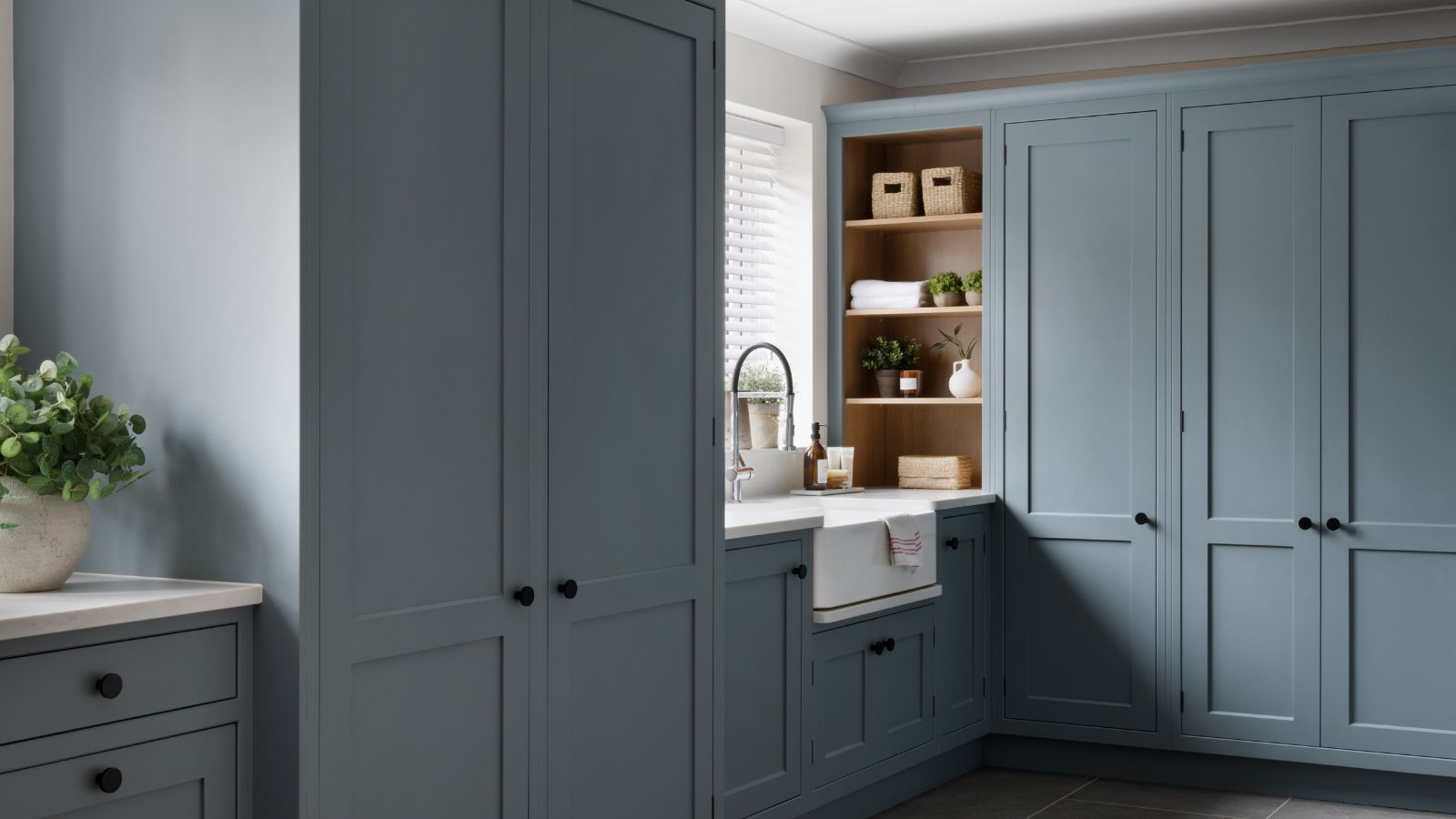 ‘Completion days’ are the answer to laundry doom piles, pro organizer claims – here’s how this hack can instantly stop fresh laundry from piling up once and for all
‘Completion days’ are the answer to laundry doom piles, pro organizer claims – here’s how this hack can instantly stop fresh laundry from piling up once and for allStay on top of your laundry with the 'Completion days' method
By Chiana Dickson
